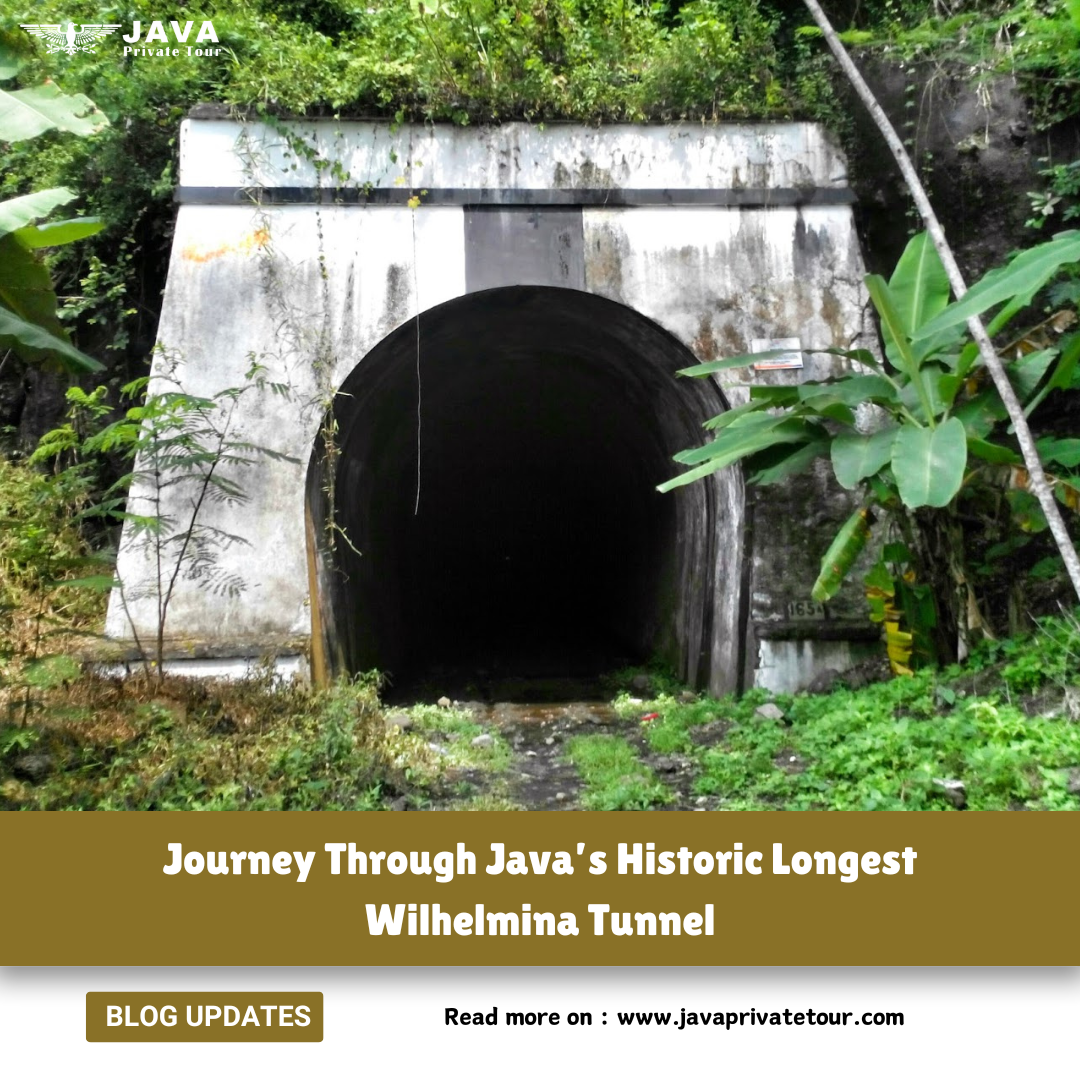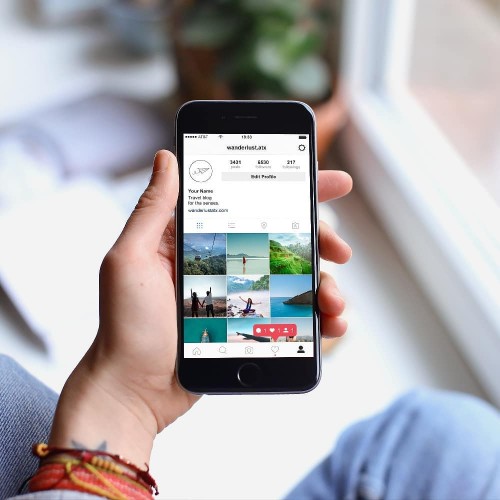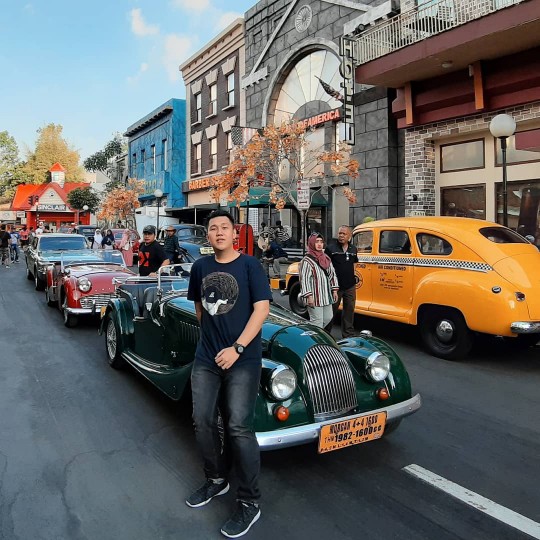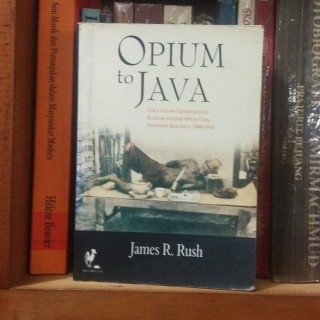Nestled in the scenic landscape of West Java, the Wilhelmina Tunnel stands as a testament to the grand engineering feats of the Dutch colonial era. This tunnel, which stretches 1,127.1 meters, remains the longest railway tunnel ever constructed in Indonesia. Built by the Dutch in the early 20th century, the tunnel was a crucial part of the Banjar-Cijulang railway line, designed to navigate the challenging terrain of mountains and valleys. As you venture through this piece of history, you’re not just walking through a tunnel, but a portal into Indonesia’s rich past, where every brick tells a story of colonial ambition and local resilience.
A Journey Back in Time: The Story of Wilhelmina Tunnel
The Wilhelmina Tunnel, also known locally as the Sumber Tunnel, is located on Jalan Pantai Karapyak, in the village of Emplak, within the Kalipucang district of Pangandaran, West Java. The tunnel was named after Queen Wilhelmina of the Netherlands, who reigned from 1890 to 1948. Her name is immortalized in this engineering marvel, which, to this day, impresses with its sheer scale and the challenges it overcame during its construction.
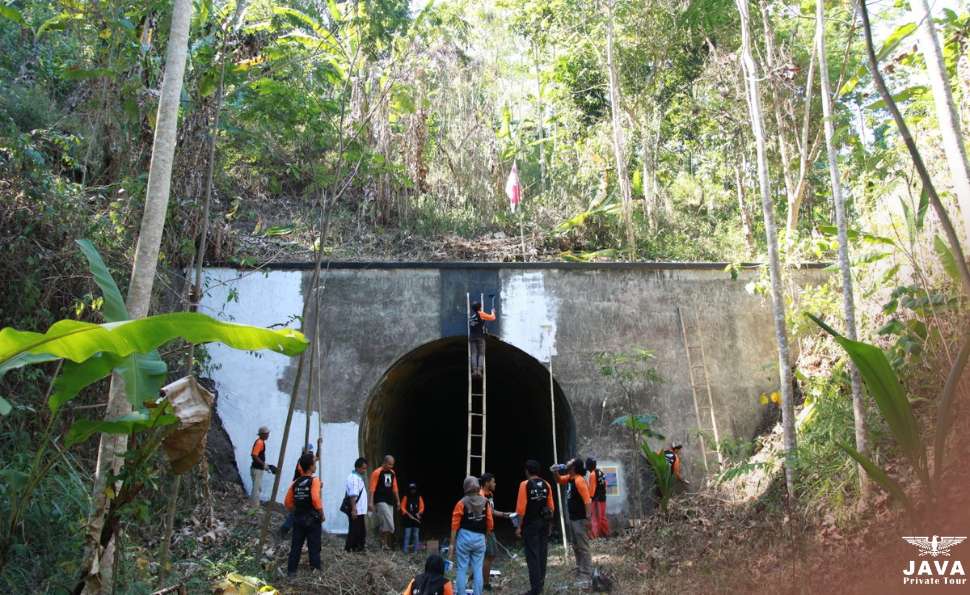
The Construction of the Wilhelmina Tunnel
Constructing the Wilhelmina Tunnel was no small feat. The project, which began in 1914 under the Dutch railway company Staats Spoorwegen (SS), involved the meticulous and labor-intensive task of drilling through the dense andesite rock of the mountains. This type of rock, known for its toughness, presented significant challenges, requiring advanced technology and a large workforce. After years of grueling work, the tunnel was finally completed and opened for use on January 1, 1921.
Why Was the Tunnel Built?
The terrain between Banjar and Cijulang is characterized by steep mountains and deep valleys, making it difficult for trains to traverse. To facilitate smoother and more efficient railway travel, the Dutch engineers devised a route that included several curves and tunnels, of which the Wilhelmina Tunnel was the longest. By cutting through the mountains, the tunnel reduced the need for sharp turns and steep gradients, making the journey safer and faster.
The Legacy of the Wilhelmina Tunnel
For decades, the Wilhelmina Tunnel was a vital part of the railway network, playing a key role in the transportation of goods and passengers in the region. However, by February 1981, the entire Banjar-Cijulang line, including the tunnel, was closed due to the high operational costs and low passenger numbers. Despite its closure, the tunnel remains a significant historical landmark and a testament to the engineering prowess of the early 20th century.
The Scenic Route: Beyond the Tunnel
What makes the Wilhelmina Tunnel even more remarkable is its location. The tunnel is situated amidst stunning natural beauty, with views of lush mountains and the nearby coast. Travelers who visit the area can enjoy not only the tunnel itself but also the picturesque landscapes that surround it. The region offers a unique blend of historical intrigue and natural wonder, making it a perfect destination for history buffs and nature lovers alike.
Current Status and Future Prospects
Despite being out of service, the Wilhelmina Tunnel still attracts attention, both from those interested in history and from railway enthusiasts. Over the years, there have been several discussions about reactivating the Banjar-Cijulang line, especially as part of broader efforts to revive defunct railway routes in West Java. While these plans have yet to come to fruition, the possibility remains that one day, trains may once again pass through the Wilhelmina Tunnel, breathing new life into this historic passage.
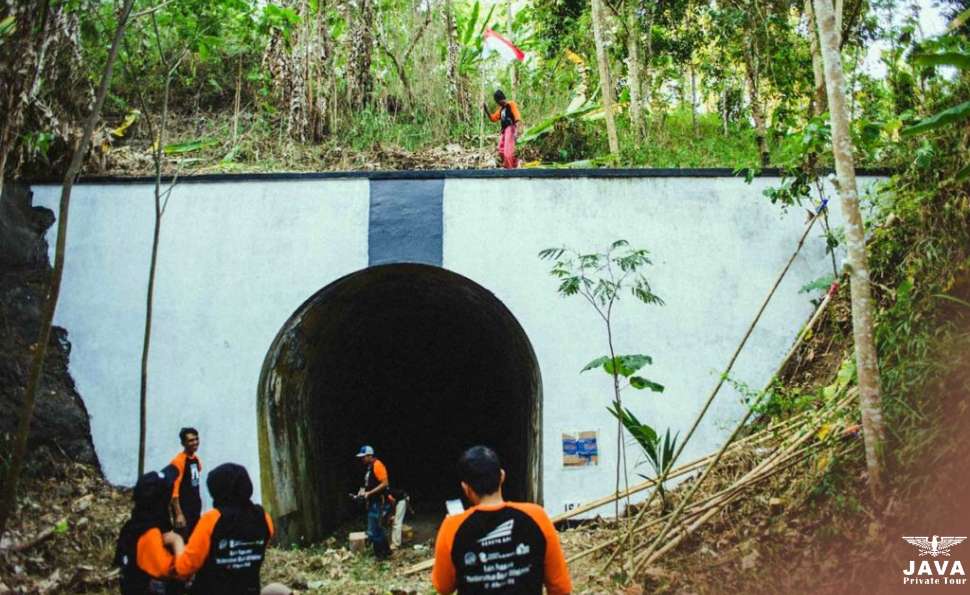
The Importance of Preserving Historical Sites
The Wilhelmina Tunnel is more than just an old railway tunnel; it’s a significant cultural heritage site that tells the story of Indonesia’s colonial past and the complex history of its railway system. Preserving such sites is crucial for future generations to understand and appreciate the challenges and achievements of those who came before us. Moreover, these sites offer invaluable insights into the historical relationship between Indonesia and the Netherlands, highlighting the impacts of colonial infrastructure projects on the local population.
Visiting the Wilhelmina Tunnel Today
Although the railway line is no longer operational, the Wilhelmina Tunnel remains accessible to visitors. Exploring the tunnel is like stepping back in time, offering a rare glimpse into the engineering challenges faced by the Dutch during their colonial rule. The tunnel’s remote location adds to its allure, making it a hidden gem for those looking to explore off-the-beaten-path destinations in Java.
A Hidden Gem for Adventurous Travelers
For those who love to explore, the Wilhelmina Tunnel offers an adventure into the past. The surrounding area is relatively undeveloped, providing an authentic experience far from the usual tourist routes. Whether you’re a history enthusiast, a railway aficionado, or simply someone who enjoys discovering hidden corners of the world, a visit to the Wilhelmina Tunnel is a journey worth taking.
Discover Java with Java Private Tour
When it comes to exploring Java’s historical and natural wonders, there’s no better way than with Java Private Tour. Our team of experienced, English-speaking guides is not only knowledgeable about the history and culture of the region but also passionate about sharing these stories with you. We offer flexible, personalized tours that cater to your interests, whether you’re here for leisure, research, or content creation.
At Java Private Tour, we understand that every traveler is unique, and we strive to provide an experience that meets your specific needs and schedule. With our range of private vehicles—from sedans to vans and even tour buses—we can accommodate any group size and ensure your comfort throughout the journey. Our guides and drivers are all certified professionals, ensuring a safe and enjoyable trip.
Recommended by embassies and trusted by countless international visitors, Java Private Tour is your go-to service for an unforgettable experience in Java. Whether it’s your first time in Indonesia or you’re a seasoned traveler, let us be your guide to this incredible island. Discover the stories, the sights, and the people that make Java truly special. Explore with us, and make your journey through Java one you’ll never forget.
Choose the Best: Java Private Tour – Your Authentic Guide in Java
In your quest to explore Java, it’s essential to have a trustworthy and authentic guide by your side. At Java Private Tour, we pride ourselves on being the original and genuine service provider in this region. While there are others who may try to imitate us, remember that there’s only one true Java Private Tour. Beware of foreign tour companies using similar names; when you choose us, you’re choosing the real deal. You can verify our authenticity by visiting our official website at www.javaprivatetour.com, and be sure to check our verified location on Google Maps here.
For first-time visitors to Java, Java Private Tour is more than just a tour service—it’s your gateway to truly experiencing the island. Whether you’re here for leisure, business, research, or content creation, we offer the perfect blend of professionalism and a personal touch. Our goal is to make sure you don’t just see Java, but truly experience it.
Ready to embark on an unforgettable adventure? Visit https://www.javaprivatetour.com/req to start planning your trip. Or if you prefer, simply click this link: https://wa.link/wk2hur to chat with us directly on WhatsApp.
With Java Private Tour, you’re not just getting a guide; you’re gaining a friend who is dedicated to making your trip extraordinary. Remember, when you’re looking to get your guide in Java, make sure it’s the one and only Java Private Tour. We can’t wait to welcome you to Java!
You May Also Like
 Lost in Glodok: A Journey Through Jakarta’s Historic Chinatown
Lost in Glodok: A Journey Through Jakarta’s Historic Chinatown
 Explore the Hidden Gem: Luweng Jaran, The Longest Cave in Indonesia
Explore the Hidden Gem: Luweng Jaran, The Longest Cave in Indonesia
 Exploring 5 Majestic Dutch Fortresses in Java: A Journey Through History
Exploring 5 Majestic Dutch Fortresses in Java: A Journey Through History
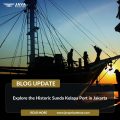 Explore the Historic Sunda Kelapa Port in Jakarta
Explore the Historic Sunda Kelapa Port in Jakarta
 The Incredible Journey of a Guard Turned Tycoon: A Tale of Grit and Gold
The Incredible Journey of a Guard Turned Tycoon: A Tale of Grit and Gold

